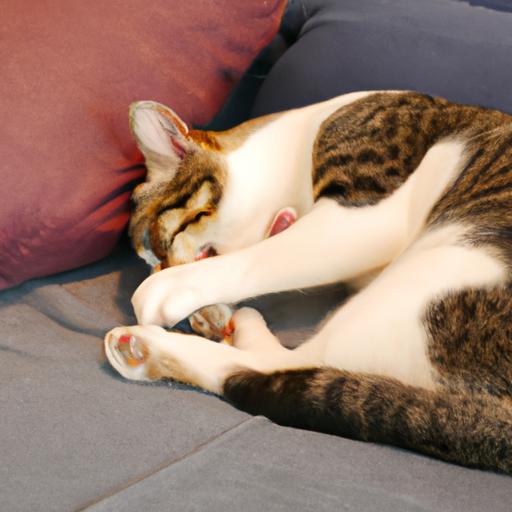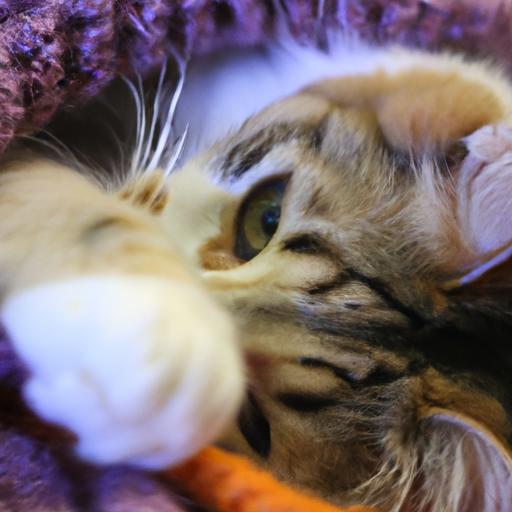
- Home
- Behavior and Training
- Understanding Cat Tail Biting Behavior: Why Do Cats Engage in this Behavior?
Understanding Cat Tail Biting Behavior: Why Do Cats Engage in this Behavior?
Gain insight into understanding cat tail biting behavior. Learn the causes, signs, and prevention methods. Expert advice for a happy, healthy feline.
Introduction
Welcome to our comprehensive guide on understanding cat tail biting behavior. As cat owners, it’s crucial to have a deep understanding of our furry friends and their behaviors. One peculiar behavior that can sometimes leave us puzzled is when cats bite their own tails. In this article, we will delve into the fascinating world of cat behavior and explore the reasons behind this unusual habit. So, let’s dive in and unravel the mystery of cat tail biting!

Understanding Cat Tail Biting Behavior
What is Cat Tail Biting?
Cat tail biting refers to the act of a cat biting its own tail. This behavior can range from mild nibbling to aggressive biting. While it may seem strange, it’s important to remember that cats use their tails as a means of communication and expression. Understanding why they engage in tail biting can help us address any underlying issues and ensure their well-being.
Causes and Triggers
Various factors can contribute to a cat biting its tail. It’s essential to identify these causes to address the behavior effectively. Some potential triggers include:
-
Stress and Anxiety: Cats may resort to tail biting as a coping mechanism when they feel stressed or anxious. Changes in their environment, such as moving to a new home or the addition of a new pet, can trigger this behavior.
-
Medical Conditions: Underlying medical conditions, such as allergies, skin infections, or parasites, can lead to discomfort that causes a cat to bite its tail. It’s crucial to rule out any health issues by consulting a veterinarian.
-
Boredom or Frustration: Cats are natural hunters and need mental and physical stimulation. Boredom or lack of environmental enrichment can lead to tail biting as a form of entertainment or frustration.
Signs and Symptoms
Detecting the signs and symptoms of tail biting behavior is crucial in addressing the issue promptly. Keep an eye out for the following indicators:
-
Visible Bite Marks: Observe your cat’s tail for any signs of bite marks, redness, swelling, or hair loss. These physical signs may indicate tail biting.
-
Excessive Grooming: Cats are known for their grooming habits, but excessive grooming of the tail to the point of irritation may suggest tail biting.
-
Restlessness and Agitation: If your cat seems restless, agitated, or displays unusual behavior, it could be a sign of underlying stress or anxiety leading to tail biting.
Tail Biting Behavior Among Different Cat Breeds
It’s worth noting that tail biting behavior can vary among different cat breeds. Some breeds, such as Siamese or Burmese cats, are more prone to engaging in this behavior due to their higher energy levels and increased sensitivity to environmental changes. However, tail biting can occur in cats of any breed, so it’s essential to address the behavior regardless of their lineage.
FAQ (Frequently Asked Questions)
Here are some common questions cat owners often have regarding tail biting behavior:
What are the reasons behind cats biting their tails?
Cats may bite their tails due to various reasons, including stress, anxiety, medical conditions, or boredom. Identifying the underlying cause is essential for resolving the behavior.
Is tail biting behavior common in all cat breeds?
While tail biting behavior can occur in cats of any breed, some breeds, such as Siamese or Burmese cats, may be more prone to this behavior due to their specific traits and temperament.
How can I prevent my cat from biting its tail?
To prevent tail biting behavior, ensure your cat’s environment is enriched with toys, scratching posts, and interactive playtime. Additionally, addressing any underlying stress or anxiety and providing a balanced and stimulating environment can help alleviate the behavior.
Should I seek veterinary help if my cat is exhibiting tail biting behavior?
Yes, it’s crucial to consult a veterinarian if your cat is consistently biting its tail. They can rule out any underlying medical conditions and provide guidance on managing the behavior effectively.
Conclusion
Understanding cat tail biting behavior is essential for maintaining the well-being of our feline companions. By identifying the causes, triggers, and signs of this behavior, we can take appropriate measures to address it. Remember, tail biting can indicate underlying stress, anxiety, or medical conditions, so it’s important to provide a stimulating environment and seek professional advice when needed. Let’s ensure our cats lead happy, healthy lives free from the discomfort of tail biting.
To learn more about cat behavior and communication, check out our articles on the meaning of slow tail swishing and the meaning of slow tail flicks.























